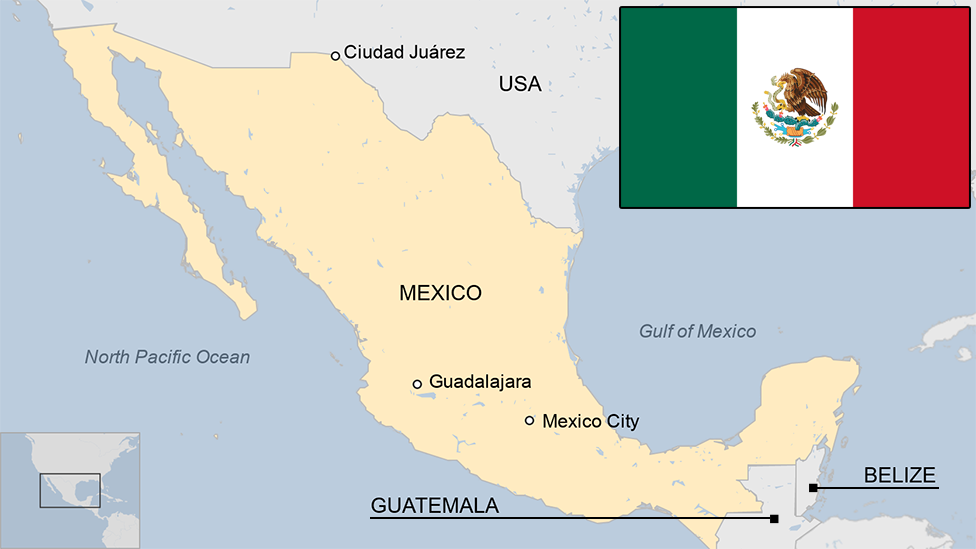Mexico's top Caribbean beaches hit by seaweed infestation
- Published
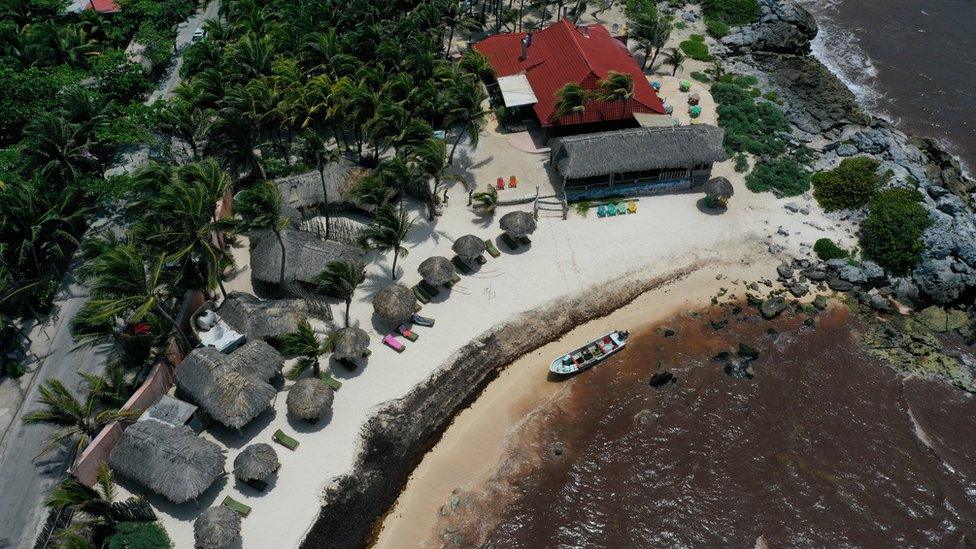

An infestation of a seaweed-like algae along some of Mexico's most visited Caribbean beaches has pitted the local community against the president, who has described the problem as a "minor issue".
In a long-running issue attributed by many researchers to climate change, sargassum has covered the popular white sandbanks, turning the pristine waters brown and leaving a strong odour as it decomposes, alarming residents, businesses and, obviously, tourists.

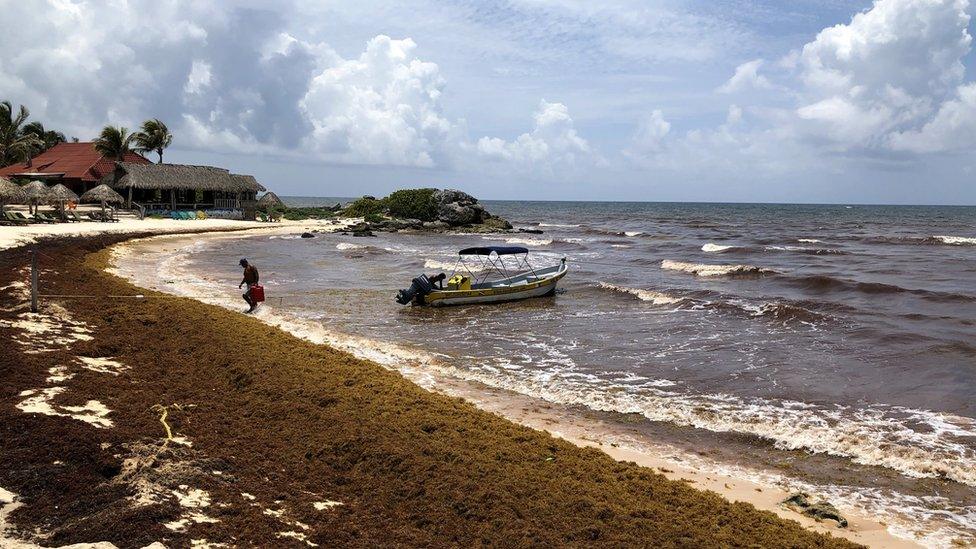

In recent years, hotels have placed nets to try to keep the sargassum in the water, away from the beaches, while workers and volunteers clean up the shore with shovels and barrows, collecting up to one tonne every day, according to the local government.
But removal is time-consuming and expensive and, for many, ineffective.
Some 1,000km (621 miles) of Mexican beaches have been impacted this year, including Cancún, Playa del Carmen and Tulum in Quintana Roo state, local officials say.

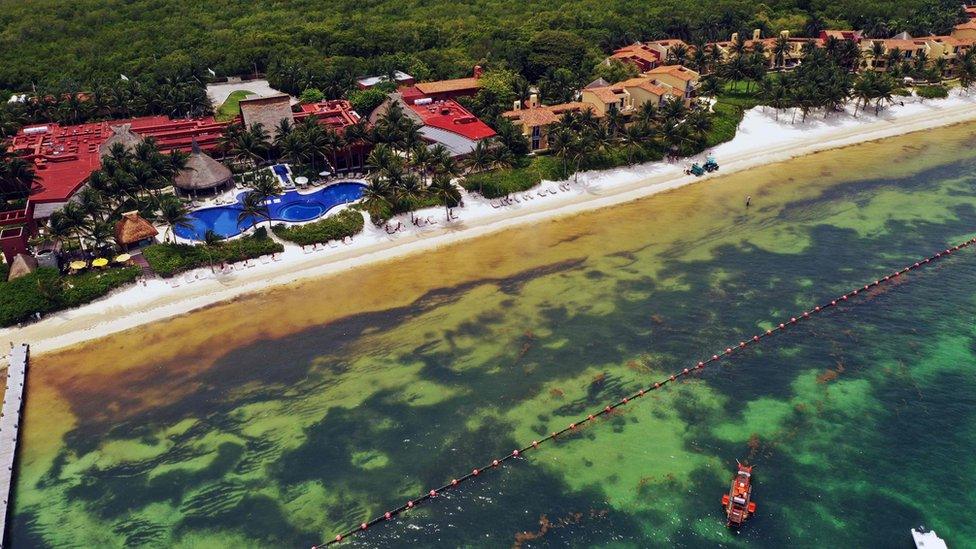

President Andrés Manuel López Obrador irritated many when, while in Cancún on Monday, he said the seaweed was a "minor issue" and that he was not worried about it causing major damage to the tourist-dependent economies. Prior to his visit, residents wrote a letter complaining that authorities had not acknowledged the real scale of this "serious situation".
"Most months of the year our beaches have lost the crystalline colour of their waters, external and their shades of blue and turquoise green; sea grass and fish die because of the lack of light and oxygen, the turtles and the coral reef are also affected," they said, according to Turquesa News website (in Spanish).
"It produces an acid gas with a rotten egg smell [when it decomposes] that can be harmful to human health."

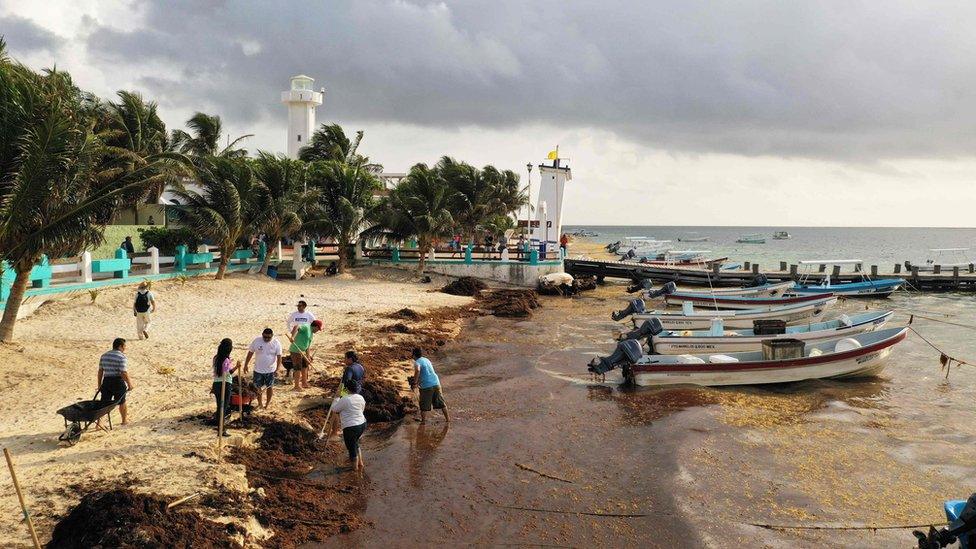

Despite downplaying the issue - which is likely to affect the region's tourism - Mr López Obrador said the government was working to address the issue and pledged "all the resources that are needed".
Rafael Ojeda, head of the Mexican Navy, said authorities would spend $2.7m (£2.1m) to build four boats designed to remove seaweed as well as new barriers to retain it.



The infestation has worsened every year since it was first reported, in 2014. Cleaning up the beaches this year will cost $36.7m, external, according to the Cancún-Puerto Morelos hotels association.
Last month, the Quintana Roo government declared a state of emergency over the issue, describing it an "imminent natural disaster". But the problem, which also affects other parts of the Caribbean, is unlikely to go away anytime soon.

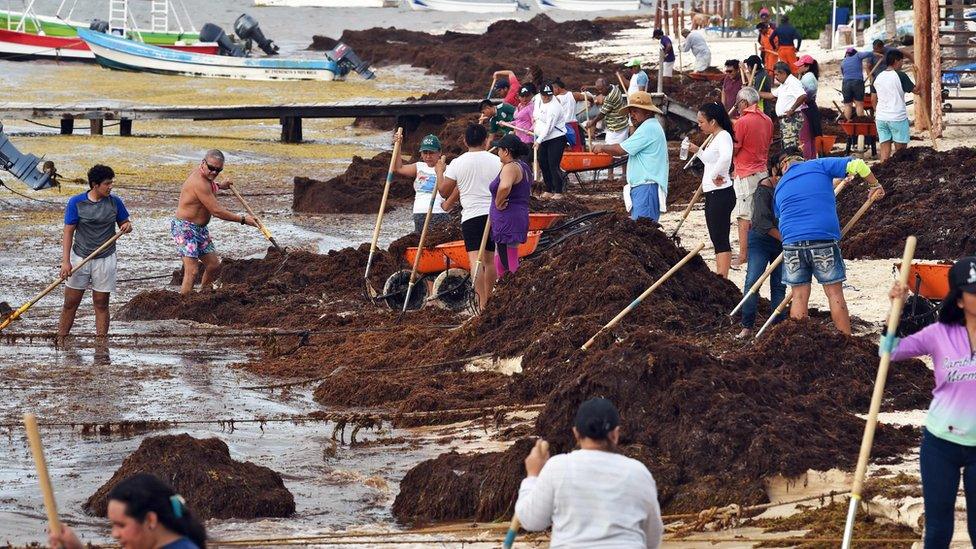

"Because of global climate change we may have increased upwelling,, external increased air deposition, or increased nutrient source from rivers, so all three may have increased the recent large amounts of sargassum," Chuanmin Hu, a professor of oceanography at South Florida University's College of Marine Science, told AP news agency.
All pictures subject to copyright.
- Published6 August 2018
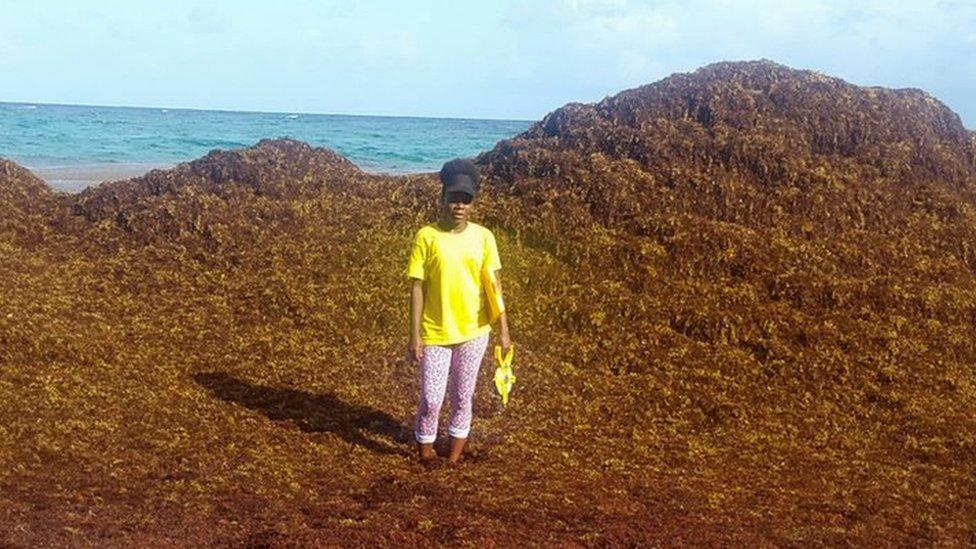
- Published4 October 2024
